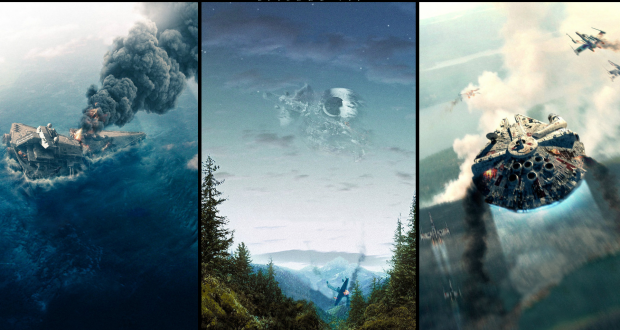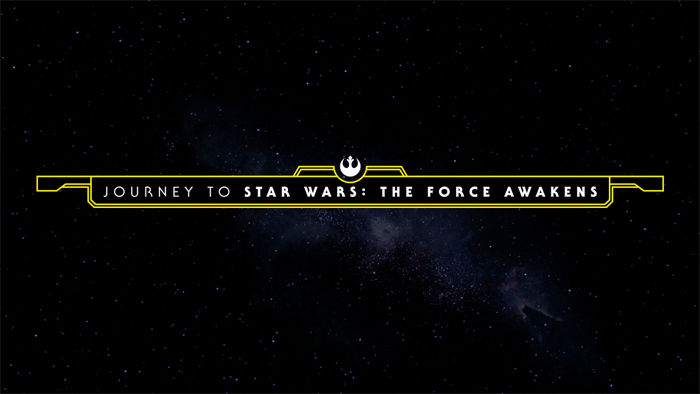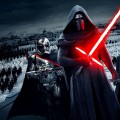With all the hype around the new Star Wars films and Disney’s decision to depart from the original Expanded Universe, a new ‘official’ Star Wars novel being added to the cannon was always going to be controversial. Throw in a writer who is known for his, ummm ‘straight forward’ commentaries, the fact that he is no Timothy Zahn, and the addition of a few homosexual characters, the fandom just doesn’t know what to do with itself. Controversial or not, what I’ve seen so far of the upcoming new additions to the world of Star Wars has left me feeling surprisingly positive about Disney’s ramp-up of new content. When Chuck Wendig announced that he had been selected for writing one of the new novels, I was stoked. Wendig is one of these writer personalities I love – he gives great writing advice, has a raw sense of humour, and I thoroughly enjoy his Miriam Black novels.
My excitement for the new novel wore off quickly as I started churning through the text. Aftermath has an unfortunate tendency to read more like fan fiction than official output for a major franchise. There are too many characters, a complete lack of focus for the plot, it desperately needed a better edit, and there’s a bit too much pandering to the fans with references and straight up regurgitations of lines from the films. For me, one of the best aspects of the original Star Wars trilogy is the personal nature of the story. They are not really films about a revolution, but revolutionaries. While this wider, epic story is happening in the background, the focus remains on a small group of people who are just a tiny part of a large Rebellion machine. Wendig seems to have entirely missed this point of the franchise, trying to grab hold of every imaginable piece of the Star Wars universe and wedge it into his novel in some way or another.
‘The tyrant Palpatine is dead. But the fight isn’t over.’
The novel is set almost immediately following the events of Return of the Jedi. The Empire has suffered a crippling blow at the hands of the Rebellion – who now call themselves the New Republic. As the New Republic tries to maintain the control they have gained while holding true to their ideals of justice and freedom, the Empire scrambles to regroup.
On Akiva, a planet of little consequence on the Outer Rim, the remaining big wigs of the Empire meet to discuss the future. Entirely by coincidence, a Rebel pilot, Norra, returns home to Akiva and her son Temmin just as the Empire’s meeting is kicking off. Also coincidentally, Wedge Antilles discovers the Empire fleet gathering outside the planet as part of routine checks. Not so coincidentally, bounty hunter Jas lands on Akiva to assassinate one of the Empire’s top brass for the New Republic.
‘War is not a state of being. It is meant to be a temporary chaos between periods of peace.’
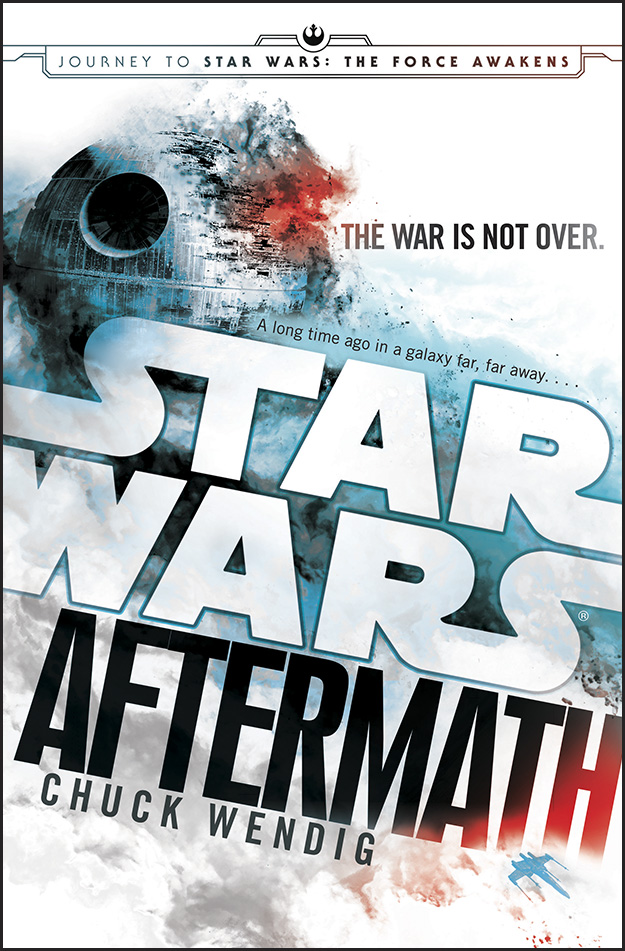 The main plot thread of Aftermath is so difficult to root out, it wasn’t until I was well over the halfway mark that I had any inkling of the central story. Norra, Temmin, Jas, and Sinjir, with their plans to assassinate the Empire’s leaders while rescuing Wedge becomes the core piece of the novel. It makes sense, focus on a small band of Rebels, very similar to the films. Great, in theory. Unfortunately, Wendig takes us on so many circuitous routes, additional ‘interludes’, and unnecessary insights into military minds plotting and planning the ins and outs of the war, it is easy to get lost on the way to the main story.
The main plot thread of Aftermath is so difficult to root out, it wasn’t until I was well over the halfway mark that I had any inkling of the central story. Norra, Temmin, Jas, and Sinjir, with their plans to assassinate the Empire’s leaders while rescuing Wedge becomes the core piece of the novel. It makes sense, focus on a small band of Rebels, very similar to the films. Great, in theory. Unfortunately, Wendig takes us on so many circuitous routes, additional ‘interludes’, and unnecessary insights into military minds plotting and planning the ins and outs of the war, it is easy to get lost on the way to the main story.
Having interludes scattered throughout the main chapters can work. It works well for Sanderson in his Stormlight Archive series, though even there I found it difficult to track initially. But Wendig fails to grasp what Sanderson manages so effortlessly – these interludes have to either truly be vital to the overall story, or eventually build up that they become their own B-plot thread. Wendig uses them to remind the reader that we are in a much bigger story of Galactic political upheaval. We get that, he doesn’t need to remind us. The zooming in on minor battles within this wider scope of background story is what makes many Star Wars tales so effective. How come Wendig doesn’t see that? And what kind of editorial oversight has he had from the big Star Wars puppet masters as Disney?
Another problem with the schizophrenic approach to a main plot thread is that none of the characters feel sufficiently three dimensional. They are all stereotypes and archetypes. Sure, that is true also of our beloved heroes in the films, but that is almost the point of those stories. I’m not sure that the characters’ cliched construction in Aftermath can be forgiven in terms of what the story was trying to say, however. I’m still not sure I know what the story was attempting to do.
‘The stories were true, Temmin realizes – from a certain point of view.’
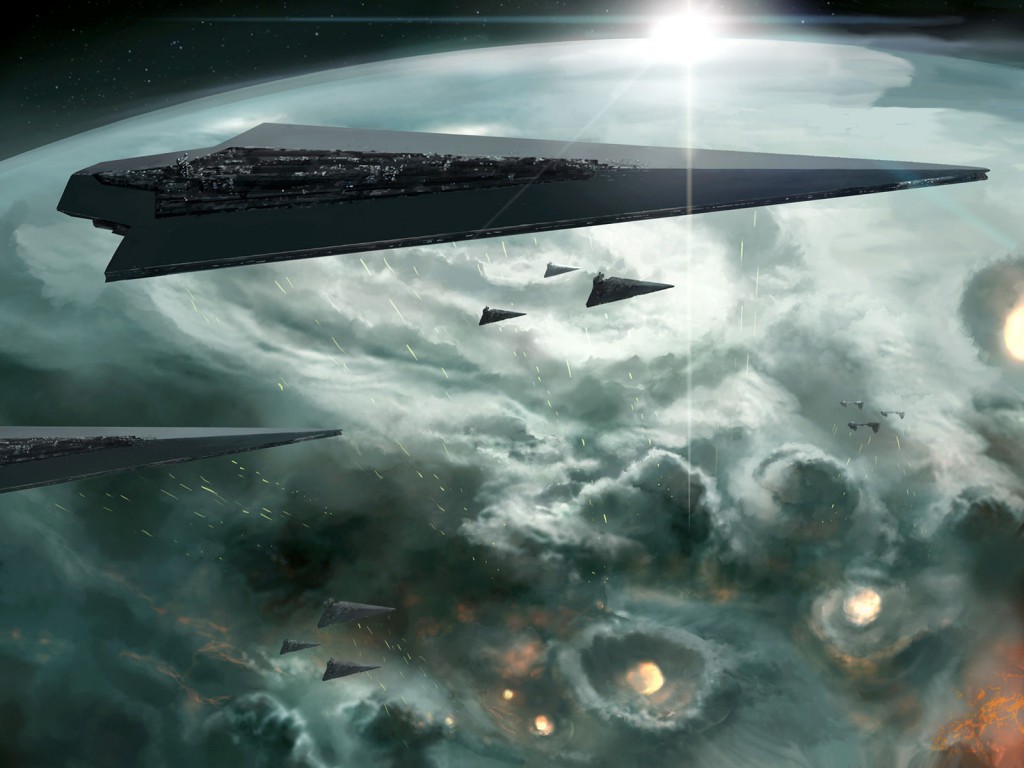 If the crazy mess of a plot weren’t enough, the lack of a good editor makes the book a chore to read. From simple typos that should have been picked up in the copyedit (‘There, none of the known Republic channels is blocked.’) to stylistic issues such as repetition of similes in close proximity (‘Then the bartender drops a fist like a falling meteor. It hits Sinjir like a malfunctioning bay-door piston…’; ‘…soaked through like a red-eyed slit-rat that drowned in a cistern. The rain pins him there like a divine hand.’), the novel reads like an awful self-published piece. Given Wendig’s successful self-publishing background, you’d think he would have been more insistent that all written work needs a good edit.
If the crazy mess of a plot weren’t enough, the lack of a good editor makes the book a chore to read. From simple typos that should have been picked up in the copyedit (‘There, none of the known Republic channels is blocked.’) to stylistic issues such as repetition of similes in close proximity (‘Then the bartender drops a fist like a falling meteor. It hits Sinjir like a malfunctioning bay-door piston…’; ‘…soaked through like a red-eyed slit-rat that drowned in a cistern. The rain pins him there like a divine hand.’), the novel reads like an awful self-published piece. Given Wendig’s successful self-publishing background, you’d think he would have been more insistent that all written work needs a good edit.
Wendig never lets us forget that Aftermath is part of the Star Wars universe we all know and love. He brings in as many references to alien races, technology, planets, and so on from the films that he can possibly squeeze in (another way he uses those blasted frequent interludes). We get it. You’re a fan. You don’t want to upset the fans, so you’re making sure it is in keeping the canon. But really, it’s just too much and it is too damn obvious. Subtlety is not Wendig’s strong suit, even in his personal novels, but subtlety would have come in handy when dealing with this incorporation of the wider Star Wars lore.
‘We are the ones who built something called a Death Star under the leadership of a decrepit old goblin who believed in the ‘dark side’ of some ancient, insane religion.’
Wendig’s energetic and comic voice does lift Aftermath out of total unreadability, but it isn’t enough. The characters needed more spunk, the plot more focus, and the world building a more subtle hand. The addition of homosexuality into the Star Wars universe was not something I had an issue with at all and I agree with Wendig that the very nature of the original trilogy was about being open minded and accepting. It’s a pleasant surprise that an otherwise lack-lustre novel delivers.
Verdict: Woeful entry into a brilliant franchise for an accomplished writer. Go read the old, non-canon Star Wars EU novels for your fix and head back to Wendig’s other outputs instead of wasting your time with Aftermath.
 Pop Verse Pop Culture Universe
Pop Verse Pop Culture Universe
